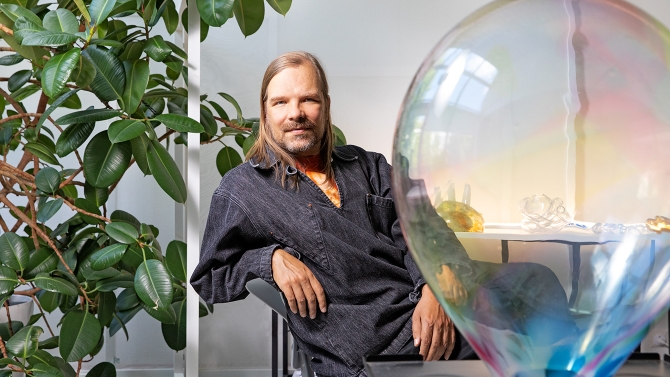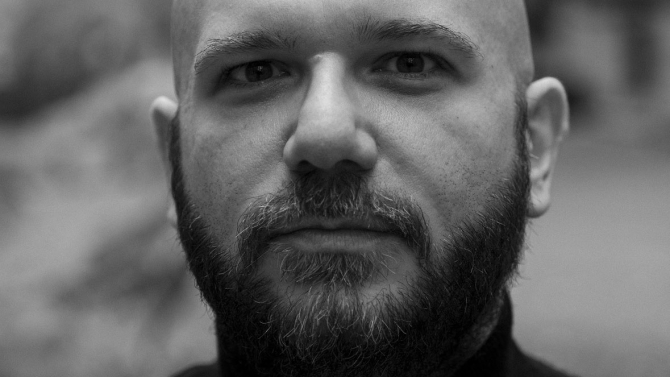(You can turn on English subtitles in the video above.)
First, I would like to thank AVEK for successfully supporting experimental media art alongside other art forms. It is a relief to see that the funding cuts aimed at AVEK’s operations were not realised, but the process should serve as a reminder that we must continue working to support culture in many ways and on many levels. The role of AVEK as an organisation is important in supporting emerging artforms: augmented reality, mixed reality and games, to name a few.
Society will never be whole without art; this reads as art being an important part of society, in all its diversity. The status of art should be approached from the point of view of allowing it to be an even greater part of the discussions that determine the way for the future. Those working in the field of culture were hit hard by the effects of the pandemic, and it would be important to find forward-looking support and hope for the future now, when the situation has been dire for so long.
Recently, I have thought a lot about the profession of being an artist in the era of an ecological crisis. How can we work faced with these challenges and not become paralysed? What does meaningful cultural activity mean in the situation that we find ourselves in: in the middle of a global crisis?
A binary approach may not be the best way forward. Sustainability seems more like a symbiotic concept. It cannot be divided into ecological, social and financial sections. Similarly, art is not separate from these processes. I think that ecology as a buzzword is not a topic or theme, but connected to an ability to feel reciprocal resonances when they occur. Changes in the way we live our lives will inevitably also change the way we make art.
The intrinsic value of art consists of being in a symbiotic relationship with all other areas of society. The justification of art is often debated, but a universal model can never be deducted from this debate.
In my view, art is not a mere mirror, because mirrors are allegories that reflect sameness. Maybe art is a language that, ideally, allows us to experience and think about complex systems and read them together. Instead of acting like mirrors, art-like actions or situations serve as porous and sedimentary platforms where active thought can occur osmotically. The concept of reflection is so deeply rooted in the structures of debate that it is sometimes difficult to see past it. Similarly, the artificial gap between corporeality and language also has deep roots in discussions. I highlight these issues here because they represent problems that motivate me to create art.
Words build worlds, and the words we choose matter. Artists are often thrust into situations where they must provide an exhaustive explanation of their work before it is finished. Project models have replaced the possibility of layered thinking and navigating one’s way around subtle differences. It often feels like language should surround and explain the idea of the work completely.
I often return to the way in which science fiction writers create worlds when I am thinking about processes related to my works. Sci-fi sometimes allows for the generation of levels of imagination that might otherwise be ignored. But how can we imagine things in the middle of tangible restrictions and crises? Author of speculative fiction and essayist Ursula K. Le Guin said: “To use the world well, to be able to stop wasting it and our time in it, we need to relearn our being in it.”
Because our actions will spend the resources of the world, knowingly or unknowingly.
We are faced with the question of material use, durability and waste. And ultimately the consequences of using materials. These are not questions posed solely to artists: they need to be asked of everyone.
Roughly ten years ago, I was making a series of works focusing on the global circulation of copper. I came to the conclusion that many technologies alienate us from their origins, the journey of items from material compounds to consumables. The study became an alchemistic concoction combining geopolitics, climate change, mines and mythologies. Even an elementary understanding of this tangled mess helped me locate authorship in another way, to see the energetic starting points of my own actions from a different angle. Today, rather than being a theme, this approach has become an undertone of my thinking.
In art, change and the ecological transition must primarily occur where the production of exhibitions is taken for granted. Here I also refer to the fact that artists cannot take being able to exhibit for granted. Museums and biennials, for example, produce content and share resources constantly. An artist may, of course, create examples, but a single work of art is not easily adopted as a general ideal practice.
If art is valued, its commissioner should offer artists meaningful channels and prerequisites to produce art carbon-neutrally, for example. Post-fossil art or art that consumes as little as possible has been made for a long time: in the 1960s, many artists literally made art with what they happened to have at hand when they came to the studio. It is also clear that many of the troubles of our time have already been acknowledged 50 years ago.
When we talk of ecologically oriented art, we should find the ability to see past simplistic representations and try to find places where information is layered in a more complex way. I think art is a great synthetiser. Another way to put this is to say that there is no separate ecological art or eco art; there is only art that has a sensitive approach to mutual dependencies. And these dependencies are by no means equal.
We speak of the end of the world in connection with themes such as climate change, but we must note that the world has already ended for many indigenous peoples. There is a level on which it is painfully obvious that we must quickly find ways of benefitting the Earth. But there is also a level on which we must address how the effects of many different crises are divided by inequality.
The many schools of feminism play an important part in social development and offer tools for mapping these difficult areas. It is important to continually gauge new words and ways of describing the syntheses in reality, and for me personally, feminist philosophy of science has served as a teacher in this regard. There is no neutral playing field in formulating information, even if we may think so at times.
I now look back on many things I have done through the lens of symbioses and co-existence. In my work, I examine situations and reactions in which many lifeforms meet in the same space. An individual work of art is often only a crystallisation of a larger bundle, and even if it feels final, I always think about what might grow from the traces left behind by the work and its compost.
I work modularly. This is a way of trying to distance myself from project models in some regard. I am trying to create situations where the things I am doing intertwine so that they could be used to build resonating feedback loops.
Finally, I would like to thank all the people and and organizations and other lifeforms that have carried me and my work over the years. Art is never created in a vacuum. Just as the human body is a cooperation of different species, art is the sum of many makers and agencies.
— Tuomas A. Laitinen


